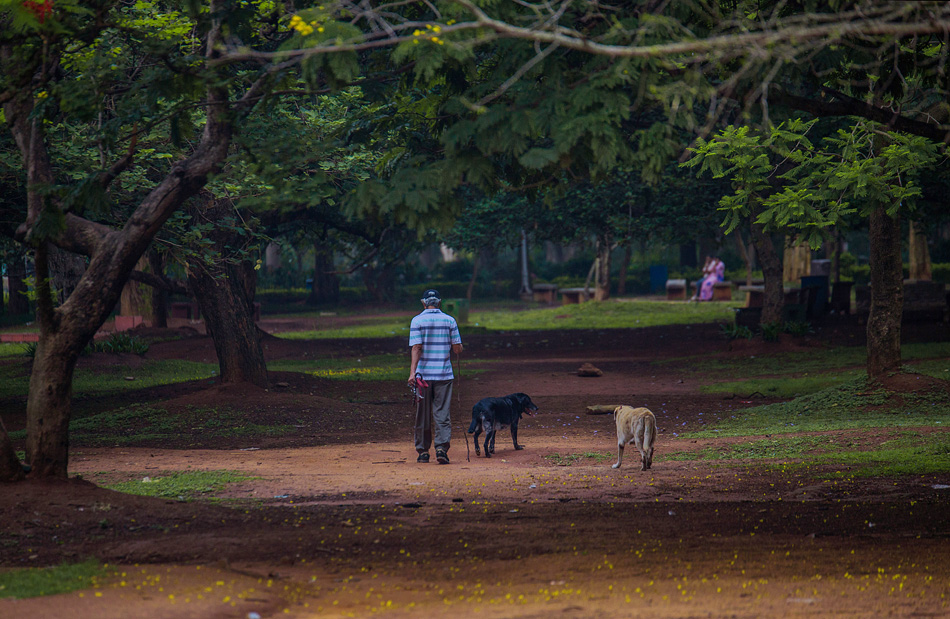It was a beautiful day at Pattadakal, with clouds scattering the light of the setting sun. Wandering in this beautiful garden of stones, I found this arch and the view from it fascinating in the background of scattered clouds.

Tall poles with fluttering prayer flags are omnipresent across Bhutan. You will see them in front of the houses, at monasteries and dzongs, at clearing in a forest, on either side of the bridges, edge of the villages and high passes. These prayer flags carry the Buddhist mantras in the air as they flutter in the mountain breeze. Here is a cluster of those flags at Chele la pass, overlooking the mountains adjoining Jomolhari.

I have been testing a Tamron 70-200 f2.8 VC lens lately and enjoying using it. A week ago, I took the lens for a test shoot in Cubbon Park, photographing the foliage on the ground leftover after the fall season and also the morning walkers in the area. Here is a photograph from the visit.

Photographed with a Tamron 70-200 over Canon 5D Mark II. Aperture set to f2.8


